Jump to winners | Jump to methodology
Teaching the future: classroom catalysts
No longer confined to academic results or school leadership titles, today’s most impactful educators are systems thinkers. They work across institutional boundaries, mobilise evidence into practice, challenge outdated assumptions and bring others along.
“Forward-thinking educators are not waiting for permission. They are experimenting with new models of learning and engaging students as co-designers and building networks that allow innovation to spread across schools and systems,” says
Glenn Savage, professor of education futures at the University of Melbourne.
As the Australian education sector grapples with the compounded pressures of improving student outcomes, workforce shortages and technological disruption, this mindset is more crucial than ever.
Latest data from the Australian Institute for Teaching and School Leadership (AITSL)’s National Trends: Teacher Workforce paints a sobering picture of the profession:
-
35% of teachers and leaders are unsure whether they will stay in the profession until retirement.
-
39% intend to leave before retirement (2023).
-
Teachers aged 30−49 were the most likely age group to intend to leave the profession before retirement.
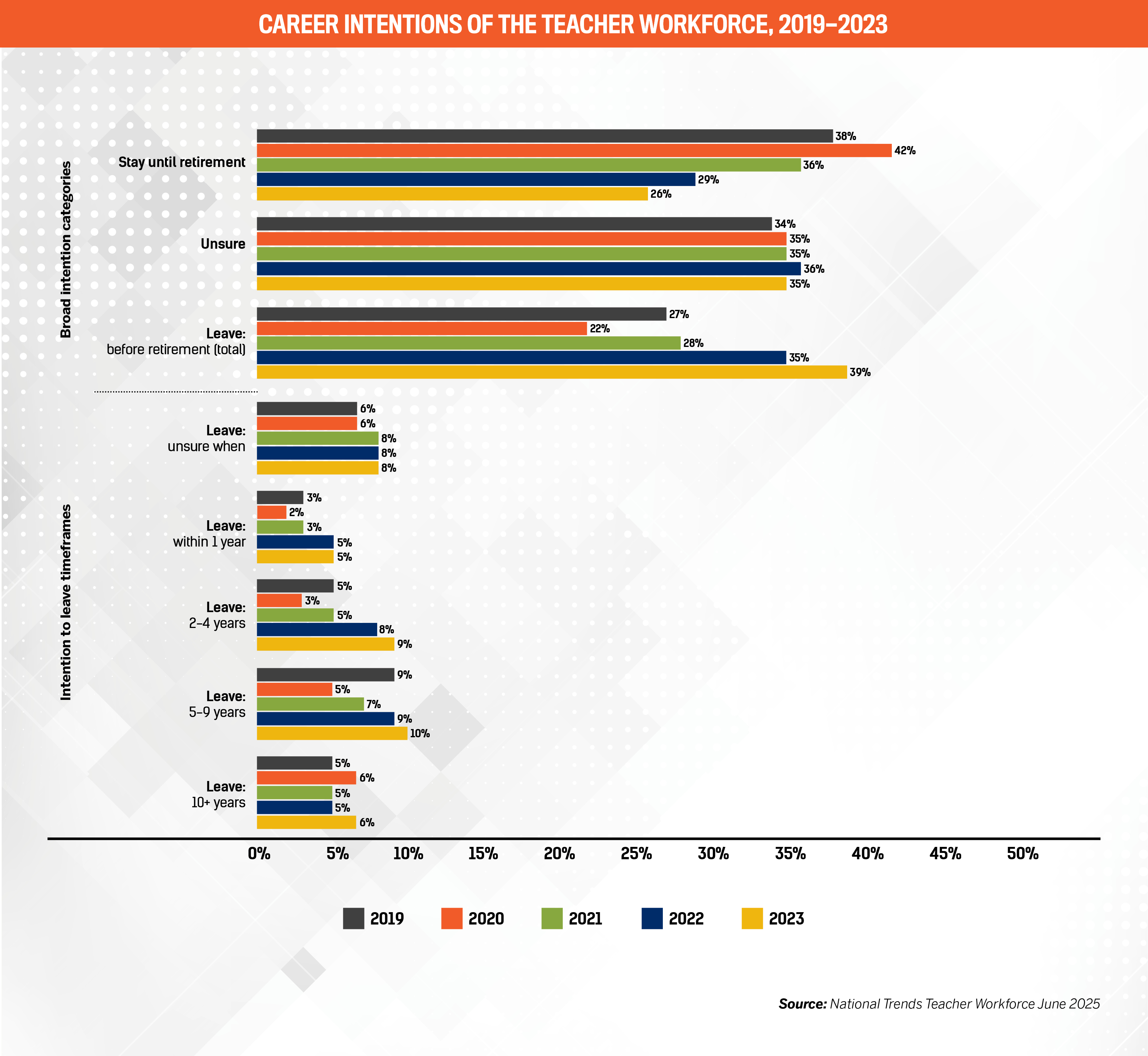
The most common reasons for teacher dissatisfaction are workload and wellbeing. The Black Dog Institute reports that 70% of educators feel their workload is unmanageable, while the Australian Education Union (AEU)’s 2024 State of Our Schools report points to the burden of administrative and compliance work (43%) and student management issues as key factors.
Jordana Hunter, program director of education at the Grattan Institute, acknowledges these realities but takes a more optimistic view, believing that despite these challenges, there is a moment of opportunity. “I do think it’s important to be honest about the complexities,” she says, “but we must equally make sure that we’re not underselling the excitement. Teaching is modernising in so many important ways.”
She explains how forward-thinking school leaders are finding the best way to balance the use of tech, for example. “Some scaling back of technology is actually warranted,” she admits. “At the same time, there are aspects where I think there’s incredible promise and technology can be used in ways to really improve outcomes. It’s a great time to be a curious professional who wants to get involved in the research and think about how that builds the expertise of the entire profession.”
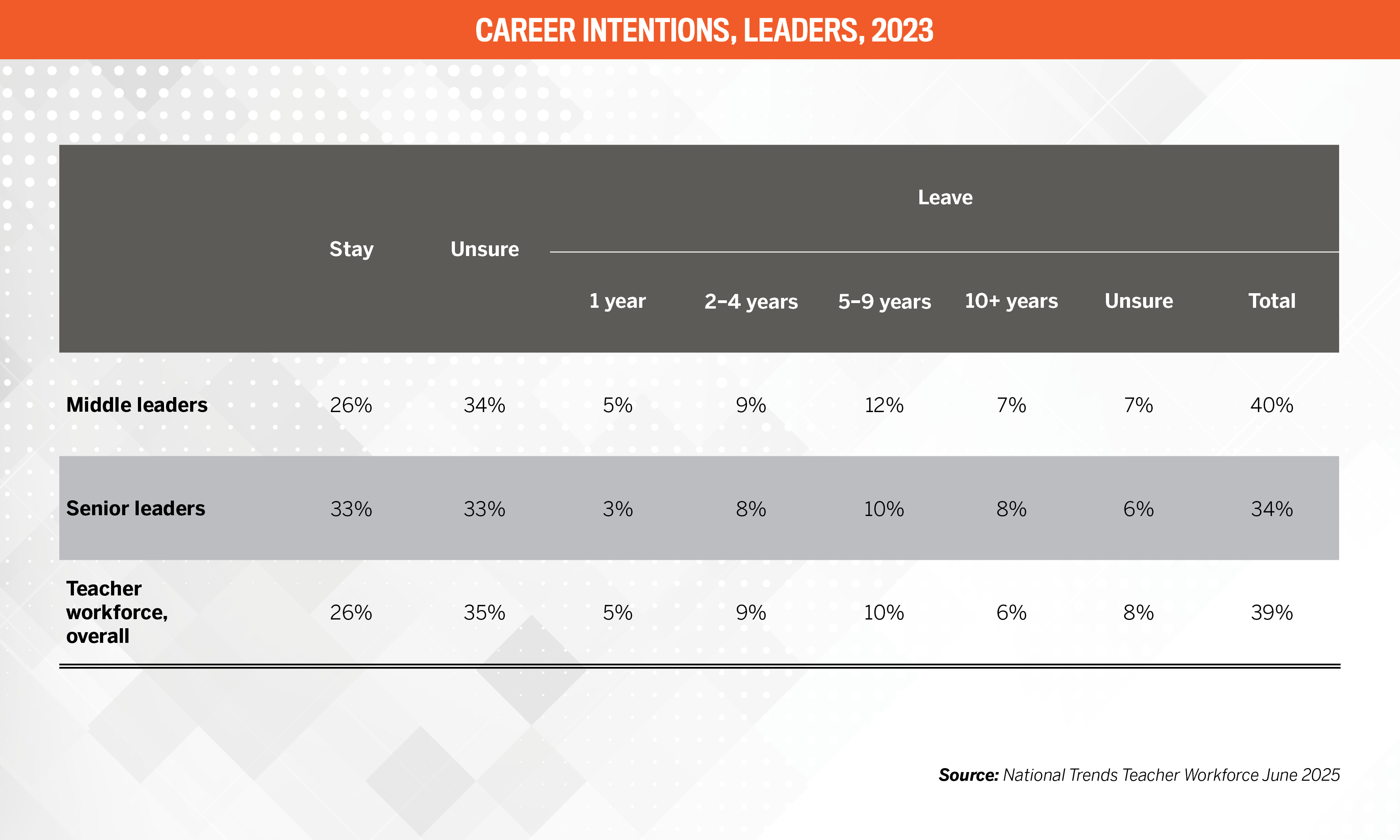
Hunter is not alone in holding this view. While workforce shortages are not yet a thing of the past, AITSL’s National Trends report offers a silver lining:
-
Over half (52%) of non-teaching registered teachers said they would consider returning to the teacher workforce under the right circumstances.
-
5% are actively looking to return to the profession.
Education researcher Saul Karnovsky referred to the current shortage of teachers as “unprecedented”, but there is some hope, with Department of Education data from tertiary admission centres showing a 7% increase in applications and a 14% increase in offers compared to 2024.
In this context, influential educators have never been more important to encourage and retain teaching talent. Their skills, expertise and knowledge can help reverse the sector’s workforce trends and offer new leading-edge possibilities for students across Australia.
The Educator’s Most Influential Educators 2025 celebrates those who exemplify that broader vision. From policy influencers and technology leaders to grassroots innovators and wellbeing champions, these individuals are confronting some of Australia’s most pressing educational challenges head-on.
Common patterns across TE ’s Most Influential Educators 2025
As the achievements and attributes of this year’s prestigious list were analysed, an interesting profile emerged.
Innovation in teaching and learning
-
Many educators introduced cutting-edge pedagogies.
-
A strong trend of curriculum innovation is evident, such as STEM enrichment or personalised learning profiles.
Focus on student agency and equity
-
A clear pattern is the shift from traditional education models to student-centred approaches, empowering learners as decision-makers.
-
Many leaders (especially in rural or disadvantaged areas) advocate for equity of access − notably in regional IB implementation, STEM opportunities and inclusive programs for students with diverse needs.
Integration of AI and digital tools
-
Multiple educators are leveraging generative AI, AI avatars and virtual platforms to either enhance learning or streamline administrative systems.
-
Use of data dashboards (e.g. for mastery tracking or wellbeing) demonstrates a broader acceptance of digital literacy as a core educational pillar.
Holistic development and wellbeing
-
Many educators have embedded mental health and wellbeing into core practices.
-
Programs focus on social-emotional learning, staff wellbeing and reflective teaching, moving beyond academic metrics.
Key trends shaping educational impact
Cross-sectoral collaboration
-
The Most Influential Educators are not working in isolation − they’re collaborating with government bodies, industry partners, universities and community organisations to shape policy, resource allocation and innovation.
Leadership in marginalised or underrepresented communities
-
Many have made strong efforts in:
-
These educators serve as role models in transforming narratives around marginalised groups in education.
Professional learning ecosystems
-
Several have created scalable teacher development frameworks.
-
Other educators provide external coaching, mentoring and content creation that scales nationally.
Measurable institutional change
-
Many nominees led schools through dramatic performance turnarounds, increased enrolments, or improved NAPLAN and ATAR results.
-
This often coincided with a revamp in school culture, branding and long-term strategic planning.
Underlying reasons behind their influence
Responsiveness to contemporary challenges
-
These educators responded to real-world issues −
AI disruption, teacher burnout, student disengagement,
post-COVID trauma, climate concerns and workforce gaps.
-
Their success is largely due to the timeliness and relevance of their solutions.
Dual role: practitioner and advocate
-
Most combine practice with policy influence, conference presentations, publication and public commentary.
-
This dual presence amplifies their influence beyond school walls to national and global platforms.
Authenticity and grassroots leadership
-
Their work reflects a deep authenticity, often rooted in decades of frontline experience.
-
Their credibility stems from their visibility in classrooms, among families and within their communities − not just from their use of high-level strategy.
Willingness to lead change
-
They take risks, embrace new paradigms (e.g. alternative metrics, interdisciplinary models) and actively challenge outdated norms.
-
They mentor others − amplifying their influence across future generations of teachers and leaders.
TE ’s Most Influential Leaders 2025 are
future-proofing the youth
Changemaking highlight: Futures Framework
The former elite gymnastics coach and rural native knows all too well the difference a world of opportunities makes. Lloyd’s approach is to challenge the status quo by not just preparing students for exams but equipping them for life, careers and leadership.
Under his guidance, Plumpton High has transformed into a hub
of innovation, forging strong partnerships with more than
60 business and university partners, and reshaping how students interact with education and industry through Years 7 to 12.
This is made possible by the school’s Futures Framework, a multifaceted system embedding student voice, industry mentorship and personalised career pathways into every level of the school’s operation. “I saw that access to things that were broader than what was available in the town weren’t necessarily accessible for most of the population,” says Lloyd, reflecting on his rural upbringing. “That shaped my passion for making sure people are able to achieve their goals, dreams and aspirations; and to do that, they need to understand what’s beyond school.”
The program is structured to grow with each student across six years of secondary education, pairing them with mentors and immersing them in industry-led learning. It consists of a range of integrated programs, including:
-
Futures Centre
-
Student Executive Council
-
structured career path planning
-
Duke of Edinburgh International Award
-
innovative wellbeing program

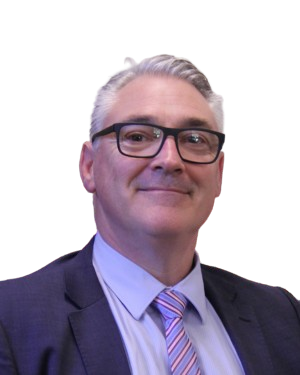
“We need to continue to build strong humans that contribute positively to our communities. Youth can become the leaders of tomorrow if we expose them to the opportunities that are out there”
Tim LloydPlumpton High School
Beginning in Year 10, every student develops a career plan, supported by mentoring through the school’s expansive corporate partnerships with organisations such as LinkedIn, PwC, Adobe, Citibank and major universities.
Traditionally, career path planning is overseen by careers advisors, but Lloyd’s Futures Framework has a higher-impact and custom-targeted approach. “We have built a whole centre,” he notes, “staffed by people with corporate recruitment backgrounds who tailor plans for every student using industry data, interviews and mentorship.”
The outcomes are striking, as in a region where youth unemployment exceeds 25%, Plumpton High reports an average of 97% post-HSC engagement rate in work, study or training for the last six years.
What sets Lloyd’s work apart is not only outcomes but the deep systems thinking behind them. From the positive psychology embedded in the school’s wellbeing curriculum to data-driven mentorship matching via LinkedIn tools, Futures Framework is designed to scale, evolve and meet students where they are. “Our students aren’t just graduating with good marks,” says Lloyd. “They’re leaving with Exit Credential Transcripts, which helps them get into university and employment.”
What’s more, the program is not confined to academic
high achievers as every student at Plumpton participates in Futures Framework programs, whether through leadership, mentoring, industry immersion or wellbeing. “That’s the beauty of the model. It works because it’s inclusive, structured and informed by real-world needs,” Lloyd adds.
Changemaking highlights: M@ggie’s Digital Hub and Girls in Gaming
As head of faculty – digital innovation and design, Daud stands out for transforming how schools approach equity and engagement.
Her two cornerstone initiatives redefine what meaningful tech adoption looks like in education. These aren’t simply digital tools or extracurricular offerings; they reflect a strategic, school-wide rethink of how tech can empower students and staff in a
fast-changing world.
M@ggie’s Digital Hub is a custom-built, school-wide ecosystem that offers separate digital spaces for staff, students and parents. It delivers:
-
interactive lesson planning tools
-
on-demand video tutorials
-
AI prompt-writing support
-
eSafety and responsible AI guides
-
academic and wellbeing resources
Central to the platform is ‘Maggie’, a friendly AI-powered avatar who guides users through personalised journeys, and the uptake speaks volumes. “Within the first two days of launching, the
AI section of the hub had more than 970 visits,” says Daud.
M@ggie’s Digital Hub acts as a catalyst for cultural change. “Our girls and their parents know what we’re doing. We’re building and designing with them at the heart of everything we do,” adds Daud.
Meanwhile, Daud’s Girls in Gaming program targets a persistent gap in digital inclusion: the gender imbalance in esports and technology pathways. Frustrated by the male-dominated and often exclusionary gaming spaces, Daud flipped the model. She built an esports program from the ground up, for girls and by girls, in an environment where they could thrive safely, socially and competitively.

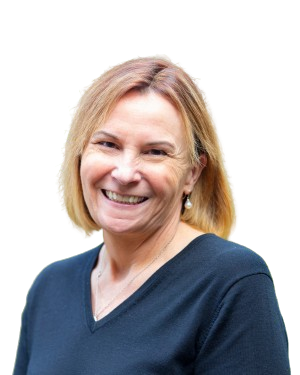
“I hope we value what everyone else is bringing to the table and learn from it together, because ultimately, the biggest winners in this are our kids. The more we’re open, the more we communicate as a community, the more we grow as a community”
Kerry DaudSt Margaret’s Anglican Girls School
Daud’s vision wasn’t about recreational play; she has intentionally connected gaming to broader professional skills in project management, music, game design and art. She explains, “Esports is a billion-dollar industry. We wanted to open up the pathways, because you’re talking about the technical and creative aspects of esports, from music, game design and the artistry that goes into the character formulation. There’s this huge industry that our girls wouldn’t have actually got an opportunity to see.”
Safety and ethics are also built into the program. All games are vetted, and all competitions are held on campus under supervision. “We’re providing healthy food during competitions, doing movement breaks and having conversations about what it means to be healthy and online,” Daud adds.
The program, which has grown its participation by 1,550% since its launch, has evolved into an official sport at the school, complete with captains, training and tournaments. In 2024, the competition expanded to welcome over 190 students from
15 schools across two tournaments.
The program has since gained the attention of Yabbr, Team Bliss, Queensland University of Technology, and even former Queensland premier Steven Miles, who publicly commended the initiative after attending a tournament with his daughter. Additionally, the Queensland Girls Secondary Schools Sports Association (QGSSSA) is now consulting with Daud to integrate esports into their interschool competitions by 2026.
Daud extends her influence far beyond St Margaret’s by being
co-founder and VP of Queensland Schools Network for Emerging Technologies (QLDSNET), where she supports over 30 schools in sharing best practices and scaling innovation. She also organised the first ever Education in AI Conference in 2024, for Independent Schools Queensland and QLDSNET, facilitating critical discussions on AI ethics, assessment integrity and policy design in school settings.
Through her work in integrating tech in education, Daud has been recognised as Adobe Creative Educator Leader and research fellow for the 2025−2026 ICGS Global Action Research Collaborative.
Despite her technological focus, Daud’s approach is firmly grounded in pedagogy and ethics. “I’m cautiously proactive,” she shares. “I take the time to research and reflect. My guiding question is always ‘Does this add value to teaching and learning?’”
Changemaking highlights: AI academy and AI avatars
Principal Camm is another leader who is unafraid to take a forward-facing approach when it comes to tech integration in education. “We want our young people to be the creators of tomorrow’s technology today,” he says. “We don’t want them to be passive consumers. We want to empower them with the skills, tools, attitudes and confidence to understand technology from the inside out.”
This mindset drives Westbourne’s AI Academy, a hands-on program that enables students to create their own artificial intelligence applications from the ground up. Rather than simply using AI tools, students build them by exploring machine learning, large language models (LLMs), data inputs, computer vision and brain−machine interfaces in real-world contexts. Camm says that some projects have shown such promise they’re already being explored as potential startups.
The Academy is supported by in-house staff with AI and cybersecurity backgrounds, and by external industry partnerships. The result is an immersive, future-ready learning environment that helps students develop entrepreneurial thinking, ethical awareness and technical fluency. “We’re on that exponential trajectory,” says Camm. “The differentiator in the future will be those who can learn how to learn new things quickly and apply them to have impact.”


“It’s incumbent upon us to make sure that we’re telling our stories, selling the positive message and working together for the collective benefit of all the young people in the country”
Dr Adrian CammWestbourne Grammar School
Camm’s vision for AI goes beyond the classroom − he is also transforming how school leaders communicate. Through the development of multilingual AI avatars, he is enabling personalised, real-time engagement with parents and the school community in scalable and efficient ways.
This is especially useful for Westbourne, where the school community represents students from more than 70 nationalities. The AI avatar began as a way for Camm to engage with international families in their native language during the enrolment process. “In our website, my AI avatar would pop up and start talking to Chinese families in Mandarin or Indian families in Hindi,” he said. “The translation was 99.9% perfect. People were blown away.”
Camm’s AI avatar responds to prospective parents’ questions in real time and generates custom messages after enrolments. It is also used to streamline communication, automate processes and support marketing efforts, all while maintaining a sense of personal connection.
The initiative is now being expanded for the school’s director of teaching and learning and a digital pedagogy coach. Camm says the response has been overwhelmingly positive, and adds, “I’ve used the technology to help parents understand that although there are challenges with AI, like deepfakes, there are also opportunities to use it for good. At Westbourne, we’re not putting our heads in the sand. We’re here to show you what’s possible and make you aware of different things that you need to
look out for.”
Camm admits that his initiatives are not without their challenges, particularly around ethical use and parental perception. However, he insists on a balance between traditional learning values and technological fluency. “We talk about technology a lot,” he says, “but that doesn’t mean it’s the only thing we do. We approach education holistically − literacy, numeracy, wellbeing and self-regulation are just as important.”
TE ’s Most Influential Leaders 2025 are shaping safer, smarter and more inclusive classrooms
Changemaking highlight: Power to Kids in School
As national program director of Power to Kids, Singh is leading one of the most essential education initiatives in Australia: equipping schools to prevent and respond to child sexual harm through school-wide change.
The broader Power to Kids program was first developed with the University of Melbourne for use in residential care settings, responding to the gaps identified by the Royal Commission into Institutional Responses to Child Sexual Abuse. But Singh felt the problem extended beyond care settings. “With one in four children in Australia experiencing sexual abuse − often from peers − child sexual abuse is a national crisis that is impacting all children, not just children in care,” she says.
In 2023, Singh and her team co-designed the Power to Kids in Schools model with primary and secondary schools across the government, Catholic and independent sectors. It was officially launched in 2024 with the Melbourne Archdiocese of Catholic Schools, where nearly 400 educators participated, confirming the model’s relevance and effectiveness across diverse school settings.
The model was adapted to reflect the everyday realities of school life while embedding trauma-informed, developmentally appropriate strategies into all layers of school operations. At its core, Power to Kids in Schools shifts safeguarding culture from reactive to preventative. “It is not a tick-and-flick program,” explains Singh. “Preventing harm is a shared responsibility and schools can’t shift the dial on their own − they need the support and buy-in of their school community.”
One of the biggest hurdles schools often face is the assumption that “this doesn’t happen here”. Singh sees it often but also notes that minds can change quickly. “We work with them to explore why existing cultures might not be surfacing the issue,” she adds. These conversations help schools take accountability and act decisively.

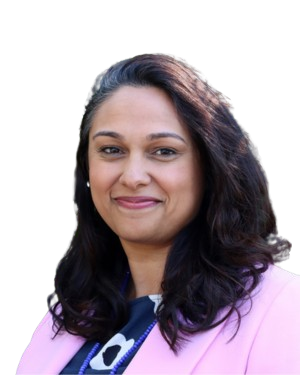
“More than anything, I hope we impart hope and agency. Our impact is only made possible by those who step up out of their comfort zones”
Smeeta SinghThe MacKillop Institute
Through guided implementation, Singh and her team help schools take ownership of safeguarding as a lived practice by embedding it across:
-
staff training
-
curriculum
-
student wellbeing
-
community engagement
Every participating school receives tailored support, including an action plan and tools for policy alignment, family engagement and ongoing evaluation.
Singh also emphasises that having “authorising environments” is crucial, so educators are empowered and supported to facilitate age-appropriate conversations on topics like consent, respectful relationships, online safety and recognising unsafe behaviours. “Normalising these conversations equips children with the knowledge and confidence to ask questions and seek help when needed,” says Singh.
An independent evaluation of the pilot revealed that 99% of participants increased knowledge, skills and confidence in protecting young people from harm. Since then, the program has been launched nationally and received strong support, including public recognition from the Victoria minister for children,
Lizzie Blandthorn.
Despite the complexity and sensitivity of the issue, Singh maintains an unwavering optimism. “A topic like child sexual abuse can feel heavy and that can lead to helplessness and disengagement,” she says. “But the good news is that we can do something − so let’s do it together.”
Changemaking highlights: Wellbeing and career development in education
Taylor is one of the most respected voices in reframing how schools support both students and staff.
After two decades in corporate education, talent management and L&D, she recognised a fundamental gap in how career transitions and wellbeing in education were addressed.
“I established Turning Point to help educators see the potential of what’s next,” Taylor says. “It’s all about bridging education and industry. Many educators weren’t getting access to the same opportunities and the same development that was happening in corporate.”
Her consultancy now works across Catholic, independent and public schools, from metro centres to regional campuses, offering tailored staff and student programs rooted in evidence-based practices and tools like CliftonStrengths and
Motivational Maps.
Taylor’s belief that staff wellbeing is the cornerstone of student success sits at the heart of her approach. “If we’re not prioritising staff wellbeing, we aren’t prioritising student wellbeing. It’s just a circle,” she says.
This philosophy informs her strategic consulting across entire school systems, with staff-facing programs featuring:
-
mental health and wellbeing initiatives
-
strengths-based professional development
-
motivational mapping and workforce diagnostics
-
career development planning and coaching
-
leadership training for emerging and current school leaders
“We don’t really do career planning with teachers,” Taylor says. “We need to better articulate and explain what that looks like across different roles in schools.” Her work supports leaders in creating clearer progression pathways, which is especially critical at a time when many educators are rethinking their place in the profession.

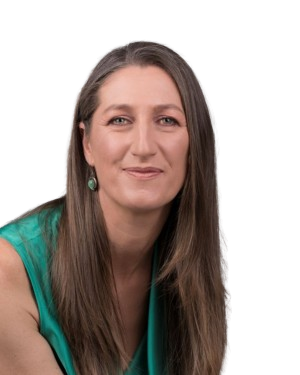
“I hope that my work has given people the tools, the strategies, the ideas to empower themselves”
Kathryn TaylorTurning Point Consulting
This approach isn’t just about supporting individuals, it’s about building healthier, more sustainable school cultures. “There’s a significant increase in mental health issues that directly links back to the teachers in the classroom,” she says. “They’re managing things they weren’t equipped for. If we don’t address that, we won’t retain them, and students won’t thrive either.”
Turning Point’s student-facing programs extend this mindset. Delivered across primary, secondary and tertiary levels, they address issues such as:
-
school avoidance and disengagement
-
bullying prevention and resilience
-
career coaching and subject selection
-
social-emotional skills and leadership development
-
parent engagement and support
“Taylor’s programs shift the lens from discipline to understanding. “It’s actually a really hard time to be a young person now,” she explains. “They’re not disengaging because they don’t care but because they feel misunderstood, isolated or overwhelmed.”
Tools like CliftonStrengths and motivational profiling help students articulate their internal drivers and re-engage with learning on a personal level. “We shift the conversation from ‘What’s wrong with this student?’ to ‘What’s this student trying to tell us?’” she says.
This strengths-based, early-intervention strategy has proven effective in re-engaging students across life stages and learning abilities, including those transitioning to senior years or navigating mental health challenges.
This systems-thinking approach is evident across all of Taylor’s partnerships, from individual schools to national speaking engagements and sector associations.
Through her roles with Wellbeing Australia, the Teachers Guild of New South Wales, and other peak bodies, Taylor advocates for a redefined model of school leadership, one that’s collaborative, reflective and human centred.
Changemaking highlights: Behaviour Curriculum and Women in Leadership program
Improving student and staff outcomes through positive classroom behaviour is the driving force behind Pitt’s efforts.
In just over a year as principal at St Columba, he has led a profound transformation. Moving away from struggles with student behaviour, low academic performance and high staff turnover, the school has become a beacon for cultural and instructional change.
Pitt introduced the Behaviour Curriculum in January 2024 as a response to chronic disruptions in classrooms and the need to stabilise both student conduct and staff morale. Rather than rely on reactive discipline or inconsistent practices, Pitt and his leadership team developed a consistent, whole-of-school approach based on the work of education expert Tom Bennett. “Students don’t intrinsically know how to behave,” explains Pitt. “Just like other foundational skills, behaviour needs to be taught and retaught.”
The teaching-based model assists students to understand appropriate behaviour across different contexts, such as distinguishing between an ‘indoor’ and an ‘outdoor’ voice or learning how to enter and exit classrooms respectfully.

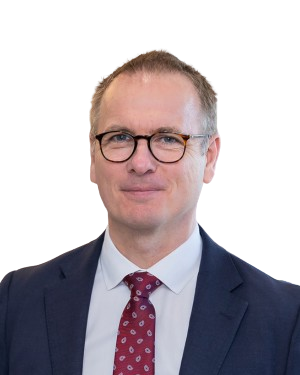
“As a school, it is our responsibility to help raise children who become adults who show respect, gratitude and humility and are kind and generous”
Darren PittSt Columba College
Every student from Reception to Year 12 follows the curriculum, and all teachers are trained in its delivery. Structured routines have cut down on transition time and created calm, focused environments. “This alone is saving hours of learning time per student per week,” says Pitt.
The effects have been substantial:
-
NAPLAN scores reached the highest in the school’s history in 2024.
-
Median ATAR scores improved.
-
Staff retention increased from 68% in 2023 to 87% in 2024.
-
Enrolments grew by 8.5% after a decline the previous year.
Pitt credits much of the curriculum’s success to shared accountability and a clear, consistent culture. “Teachers aren’t left to devise their own behaviour management strategies,” he says. “Everyone knows the rules, so there’s far less disruption.”
Leadership support is also key. When student behaviour disrupts learning, the leadership team intervenes promptly so that teachers can continue teaching and students can keep learning. This results in higher confidence among staff, improved student focus and growing demand from families seeking a safe, orderly learning environment.
Another initiative that Pitt is proud of addresses a different kind of deficit − gender imbalance in school leadership roles. “Over the last 18 months, I was concerned by how few applications we received from women for leadership positions,” he says. In three senior roles advertised, women made up less than 10% of applicants.
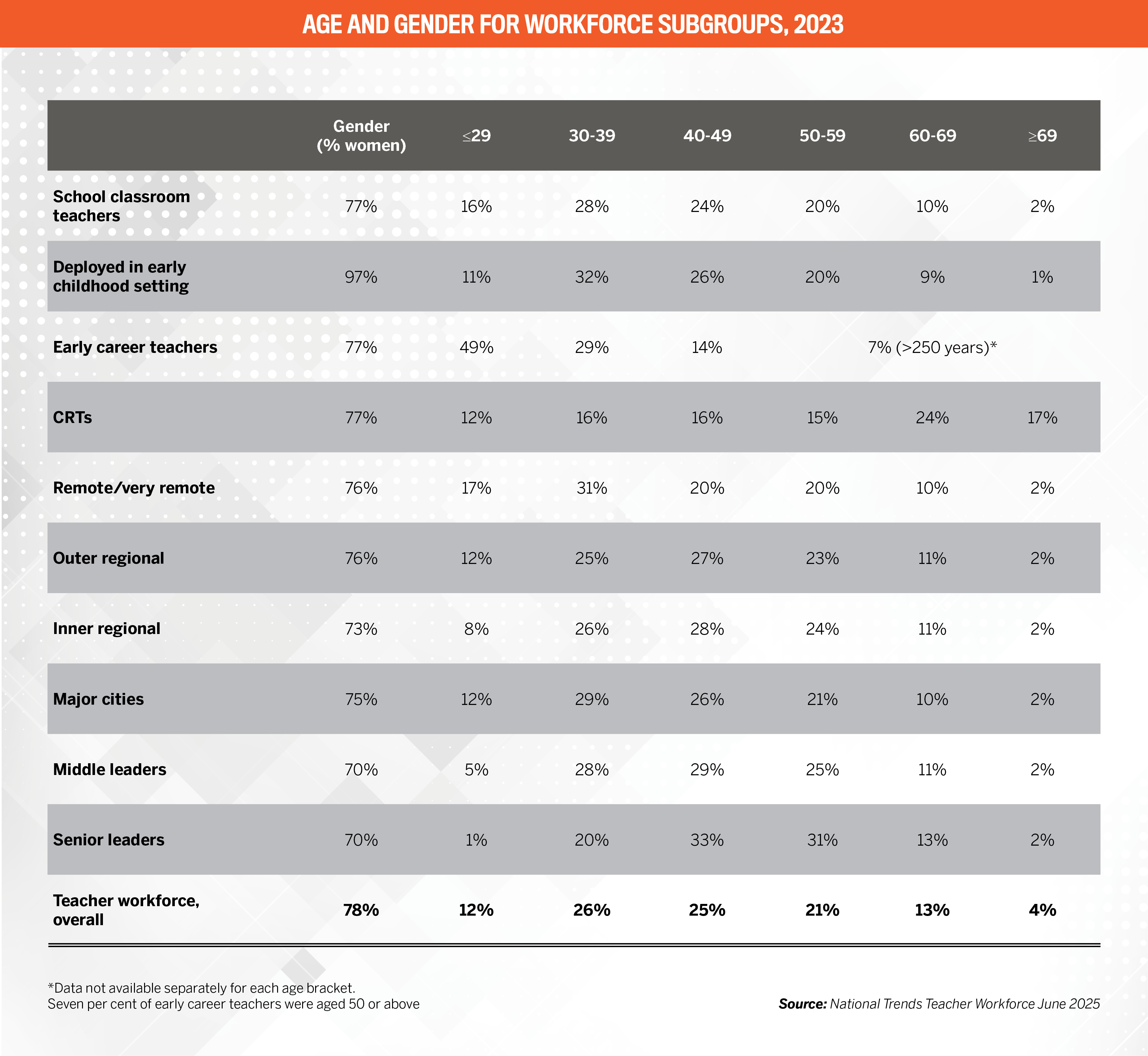
Rather than accept this as the status quo, Pitt initiated the Women in Leadership Program in 2024. With strategic input from staff and support from the college’s director of teacher development, the program now supports 30 women across various roles, from new teachers to seasoned staff, including teaching and non-teaching.
Sessions include guest presentations from accomplished female education leaders, practical leadership training and peer networking. Participants are also exploring tertiary accreditation for their work. Pitt shares, “Many participants have applied for roles they previously wouldn’t have considered. They are building their confidence and leadership knowledge, and many are already implementing their learnings in school.”
The initiative was also offered to other schools in the northern Adelaide suburbs, and Pitt believes the model has broader value. “I hope it inspires other schools to consider similar programs,” he says. “When there’s a deficit in leadership diversity, you need to respond authentically and meaningfully.”
Learning from Australia’s Most Influential Educators 2025
Across the full list of the honourees, three shared themes emerge: courage, collaboration and systems thinking.
Industry experts Glenn Savage and Jordana Hunter advocate for the need for education leaders to reach beyond their own institutions. Savage notes, “The challenges we face cannot be solved by isolated efforts. Leaders must see themselves not only as stewards of their schools but as contributors to a broader public good.”
This sentiment is echoed by Hunter, who says, “Educators that are doing well within their schools are often really well positioned to share their learnings with others. That’s the only way we’re going to spread practice right across the system.”
This year’s cohort of Most Influential Educators highlight one thing clearly: influence is no longer confined by the school gate. The most impactful educators are lifting the system from within and extending their reach beyond.
- Adriano Di Prato
Campus Director
LCI Melbourne - Ben Scholl
Co-Founder
Toolbox Education - Catherine Shaw
Head of School
The Nature School - Chris Nastrom-Smith
Deputy Principal – Curriculum
Loreto College Coorparoo - Corey Tavella
Principal
Thomas More College - Daniel Thomas
School Principal
Melbourne Montessori College - Darren Ponman
Principal Skills Consultant
Edalex - Deborah Netolicky
Principal
Walford Anglican School for Girls - Diane Pashen
Deputy Principal
Bellbird Park State Secondary College - Doug Thomas
Principal
Claremont College - Gavin McCormack
Co-Founder, Upschool
Senior Lecturer, The University of Notre Dame Australia - Henrietta Stathopoulos
Education Officer – Creative and Performing Arts
Sydney Catholic Schools - Ian Preston
Deputy Principal, NSW Virtual STEM Academy
NSW Department of Education - James Kennedy
Director and VCE Chemistry Teacher
Kennedy College - Julie Rowe
Deputy Principal
The Gap State High School - Kate Gurjian
Founder and Director
Time to Shine Australia - Kerry Brown
Founding Director
Edtasker - Lesley Johnson
Director of Pedagogy and Practice Development
Trinity College South Australia - Liam Pilkington
Dean
Corinda State High School - Lindsay McQuattie
Deputy Principal – Head of Primary School
John Paul College - Matt Pitman
Head of School (Senior)
Catholic Regional College Caroline Springs - Melissa Roberton
Head of Junior School
Casey Grammar School - Mitchell Mills
Head of Year 11/12
Saint Stephen’s College - Nathaniel Swain
Founder
Think Forward Educators - Nicola Forrest
Principal
Cornish College - Nicole Dyson
Chief Executive Officer and Founder
Future Anything - Noel Mifsud
Chair, Multicultural Education Committee
Education Consultant - Peter Foster
School Principal
Mancel College - Raffaela Grasso
Primary Teacher Librarian, Primary Creative Technologies Teacher and Primary eLearning Leader
Bialik College - Rebecca Birch
Academic in Residence
Queenwood School - Scott Sleap
STEM Enrichment Coordinator (Professor), NSW Department of Education
Professor of Practice – STEM, University of Sydney - Shane Bell
Head of Upper Primary (Years 3–6)
Casey Grammar School - Simon Done
Principal
Maryborough State High School - Steven Middleton
Associate Principal
St Margaret’s Berwick Grammar - Tina King
President
Australian Principals Federation - Vince Wall
AI for Teaching and Learning Project Leader
All Hallows’ School
The Educator’s research team received nominations for the fifth annual Most Influential Educators list from 3 to 28 March. Prospective candidates were sought based on the following criteria: education leaders, including but not limited to founders and administrators of a school or program, changemakers who have made an impact on many students and school communities in Australia in the face of adversity, award-winning educators and leaders who have been recognised for their contributions to the Australian education industry, and educators who have demonstrated innovation and creativity that is driving the education industry forward.
The research team obtained details of the nominees’ achievements and contributions to the profession. The nominees were evaluated based on the overall impact of their contributions. The final list consisted of 50 educators and other professionals who delivered specific outcomes that significantly influenced the Australian education industry.
The Most Influential Educators report is proudly supported by the Australian Boarding Schools Association (ABSA).
The Australian Boarding Schools Association (ABSA) is the leading authority in Australia, New Zealand and Asia on boarding for school-aged children. As such, it promotes the interests and wellbeing of boarders, boarding staff, boarding parents and boarding institutions. It fosters collegiality and professionalism at a regional and national level. ABSA continues to advance the profile of boarding and best practice in boarding and facilitates communication on boarding matters between schools, hostels, educational bodies and governments.
The mission of the association has been encapsulated in the following statement: The ABSA exists to promote the interests of boarding schools by enhancing the wellbeing of boarders, facilitating the professional development of staff and advancing excellent practice among schools.
ABSA’s collective ambition is to provide strategic leadership for the boarding profession to ensure excellent practice through deeper engagement of members with the association.

